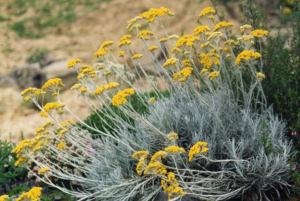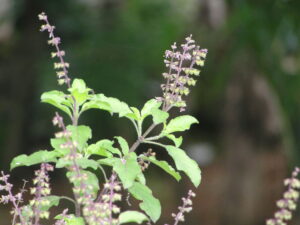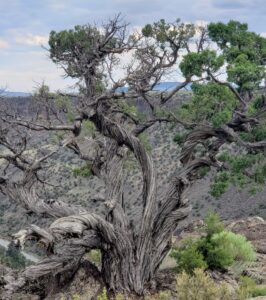A colleague recently wrote to us: “I will be giving a short class on sacred essential oils. (I will cover the origin, the history, the chemistry and their use). I am planning to include frankincense, myrrh, oud, palo santo, yakushima, sandalwood and nard. While I am preparing for it, a question has aroused; what makes an essential oil sacred? Yes, these are very complex oils, but there are others which are complex. Yes they have healing properties but there are others which have that. Is it because they have undergone transformation by their formation? But than Sandal and Nard is exception…..Is it their high energy level? But there are others with high energy level and they are not sacred oils…..So these are my thoughts and I would like to get your opinion, since you are expert in this field much more than anybody else. Thank you if you answer. Kind regards…”
There are several ways to look at what makes an essential oil sacred. I think the starting point is to look at the use of these aromatic plants, their woods and resins, in traditional practices. If you look at the ancient Egyptian traditions, they used a lot of aromatic plants for all sorts of ritual purposes, but especially around death, both to prepare the mummy and to help the soul journey into the afterlife. For the ancient Egyptians, aromatic plants were an integral part of everyday life, every daily ritual and ‘cosmetics’, which were all very spiritual and not just mundane. In fact, aromas play a role in the myth of creation, where the first child of the sky and earth is the blue lotus.
There is quite a lot of detail in the Torah and other ancient Jewish texts, e.g. the recipe for the preparation of the ketoret (dictated by God with precise instructions like a family recipe,
Exodus 30:22-38!) and the aromatic language in the Book of Job (e.g. “Ask the plants of the earth, and they will teach you;” Job 12:8), among many other places. So the spiritual power of aromatic plants was well known already then, although there’s some confusion, because of difficulties translating some of the old word, i.e. not being sure what aromatic plants they refer to. Similarly in the ancient traditions in India, both Vedic and non-Vedic there’s lots of wisdom. Islamic and Christian (catholic and eastern orthodox), and Roman and Greek use of aromatics is also important, but often influenced by the preceding traditions. Of course, there are many traditional cultures that have oral traditions and no written texts and also use sacred plant aromas, e.g. palo santo in various South American cultures.
Just to clarify: Essential oils are a fairly recent invention, so the above traditions talk about the plants and plant products (resins, etc.) The oldest essential oil that we know of is when Raymond Llull, a Portuguese alchemist made
rosemary essential oil in the 13th century.
Rosemary had very important spiritual symbolism for the alchemists. Although it was never a widespread tradition, one could argue that the alchemist’s use of essential oils was also as spiritual technology, so sacred in a way. Other ways of preparing aromatics, e.g. hydrosols and attars are older. There are these interesting
Egyptian vessels with tubes, that make me wonder if they were some sophisticated still or distilling process. So maybe the Egyptians had essential oils.
Another way to look at what makes an essential oil, or more precisely the aromatic plant, sacred is their use around death rituals. I think that what distinguishes frankincense for example and the other ‘classic’ sacred oils from others, because only some of them were used for example by the ancient Eygptians for death rituals. It is said that when the Roman emperor Nero’s wife died, he ordered more frankincense resin to be burned than all of Oman could produce in a year.
There is also syncretism when it comes to the use of aromatic plants. For example,
tuberose is originally from Mexico, and through European trade routes, made its way to India where it has been incorporated into spiritual practices, both the plant and the attar. The same is true for
Marigold (Tagetes erecta) which is also from Mexico, was already used by the Aztecs in rituals that form the basis for the contemporary Day of the Dead celebrations (you should watch the Disney movie ‘Coco’ if you haven’t since marigold features prominently) and also made its way to India where it has been incorporated into ritual life. (Again mostly the flower, but more recently the essential oil.)
I think another way to look at what makes an essential oil sacred is
the intention with which we use it and that we see it as a living being, not a product. I think the ever more widespread use (& marketing) of essential oils for all sorts of ailments and lifestyle, really as products, is the exact opposite of sacred use.
This is why Cathy and I wrote a manifesto.
We feel the way ‘aromatherapy’ uses essential oils is not sacred. To us the essential oils are the manifestation of the soul of the plant and their disrespectful use in all sorts of ways is the opposite of honoring the wisdom of the souls of the plants. They are not products, but living teachers and we need to partner with them, not use them. This includes using them sparingly, as the sacred beings they are.
One aspect of this is how they are distilled. The mass produced and fractionated oils are, simply put, dead. Certain distillers have mastered the art of keeping the soul alive in essential oils and attars. While a GC/MS can tell you the constituents and whether an oil has been adulterated, the way we tell if an oil is alive is if it moves us. We have found several oils that literally made us cry the first time we smelled them, which to us is a sign of soul to soul communication between human and plant. Those are the oils we work with and they have taught us and our students and clients many things and deepened our relationship to our own soul/unconscious.
I suppose that’s another way to define sacred oils:
Those oils that open the door to the soul i.e. the unconscious and reveal messages from the soul and allow us to deepen our respectful relationship to our soul and the souls of the plants and beings around us. Those oils that reconnect us to the web of life, of Gaia. Those oils that cure us from
Wetiko, our modern soul sickness of being cut-off and forgetting that plants are conscious and we are deeply connected with them and are dependent on Nature. (And if we don’t reconnect, we will likely go extinct very soon.) Those oils that reawaken us to treat all of Nature and each other as sacred, instead of the conflictual and exploitative mental patterns that we have been colonized by and through which we blindly perceive the world. Those oils that break open our hearts.
In that context, since you mention frankincense, palo santo, nard (Spikenard) I have to mention that all these plants are critically endangered. Although palo santo and spikenard have been beloved and powerful allies to me and us for a long time, we made the very deliberate decision to stop using them and teaching about them, because that’s the only way to protect them. I wrote about this choice in an article called “Farewell Palo Santo, Farewell Spikenard: Eulogy for Lost Essential Oils”, IJPHA 7(4) Spring 2019, p. 41-43.
Similarly frankincense is critically endangered. There have been efforts to restore the populations of sandalwood in India, and there is the questionable practice of establishing large plantations of sandalwood (santalum album) in Australia and Hawaii.
The oud trade is particularly dark.
Talking about sacred oils has to include talking about the environmental impact of the production and consumption of oils and the impact on indigenous communities (e.g. palo santo in South America, and similarly sandalwood in India, spikenard in the Himalayas and frankincense in the Arab peninsula.) We cannot separate these issues. Teaching about respectful use of sacred oils could really help decrease demand and environmental impact. Educated ‘consumers’ or people who want to work with these oils can then ask questions about how they are produced and the environmental and human impact and demand proper quality, because the attitudes and techniques in production impact quality. And there are oils we frankly need to stop using, which is a conscious choice towards the sacred.
We have looked for suitable alternatives. Right now, we feel that
Indian Valerian and
Ginger Lily (Kapoor kachri) may be suitable alternatives to Palo Santo for certain indications, although they smell completely differently. Although we haven’t heard of it referred to as sacred, we feel Davana is a very powerful ally. So we have to be pragmatic and syncretic, which is really an aspect of sacred and respectful use. And there are oils from sacred plants that are just not as well-known in the West, e.g.
nagarmotha,
pink lotus and
moulshree.
All the oils available at
Cathy’s Attars have been selected by us because we feel they are alive and we have worked with them for soul healing and vetted them for sustainability, so you could say that we offer only sacred oils, for their energy and aliveness and through our intentions and approach. We don’t offer frankincense, palo santo or spikenard for the reasons I explained above. Although we offer a number of oils that wouldn’t traditionally be considered sacred, we feel all the oils we offer are powerful living allies and teachers for these transformative and crazy times we live in and we use them and teach about them in a respectful and hopefully sacred way.
Blessings
Florian





